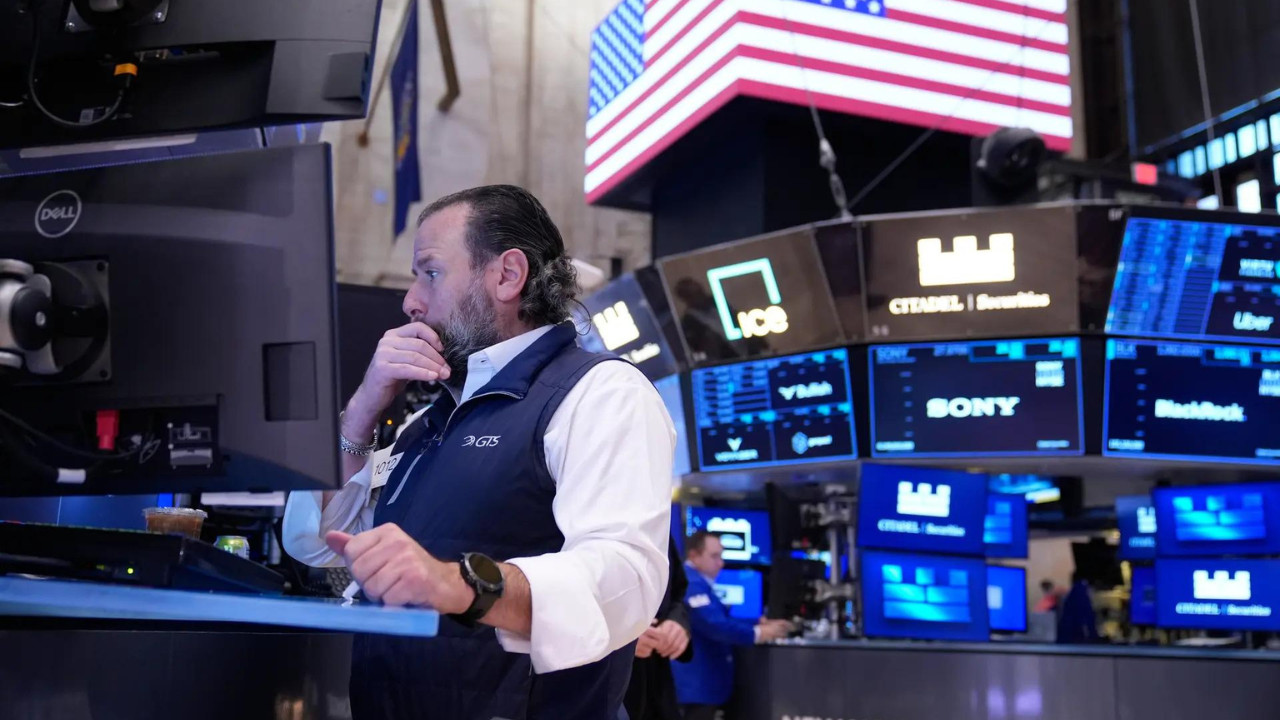US stocks experienced volatility on Friday, with major AI-linked stocks like Nvidia swinging sharply, impacting broader indices. The S&P 500, Dow Jones, and Nasdaq all saw declines. Market sentiment was also influenced by interest-rate uncertainty and global market weakness.
Navigating the Tech Turmoil: What’s Behind the Wall Street Wobble?
Wall Street just experienced a rough patch, a stark reminder that even in the age of innovation, the market can still be a rollercoaster. The major indices took a hit, marking the second significant drop in quick succession. But what’s fueling this downturn, and what does it mean for investors going forward?
The spotlight is firmly on tech. Those high-flying stocks, the darlings of the AI revolution, are now feeling the heat. We’re witnessing a broad pullback, with giants like Nvidia, known for its powerful chips essential for AI development, leading the descent. This isn’t just a minor correction; it’s a noticeable shift in sentiment that has ripple effects across the entire market, and indeed, mirroring across global indices.
Why the Sudden Shift in Sentiment?
Several factors are likely contributing to this unease. Firstly, after a prolonged period of seemingly unstoppable growth in tech, some analysts believe valuations had simply become unsustainable. The old adage of “what goes up must come down” rings true, especially when driven by speculative exuberance. It’s worth thinking if this “AI boom” can sustain itself or if the companies’ prices have merely grown too big too fast.
Secondly, interest rate concerns are still looming large. The Federal Reserve’s battle against inflation isn’t over, and hints of continued hawkishness send shivers down investors’ spines. Higher interest rates make borrowing more expensive for companies, impacting their growth prospects and potentially dampening earnings. For instance, companies with large projects might need to reconsider them with a higher cost of borrowing.
Finally, profit-taking is undoubtedly at play. After such a strong run, some investors are choosing to lock in gains, adding to the downward pressure. It’s a natural part of the market cycle, but it can accelerate a correction when combined with other negative influences.

Is This the End of the AI Boom?
Absolutely not. While the recent sell-off may be unnerving, it’s crucial to maintain perspective. Artificial intelligence is still a transformative technology with immense potential. This pullback should be seen as a recalibration, a chance for the market to digest the rapid gains and assess the true long-term value of these companies.
Consider this: the underlying demand for AI solutions is still growing. Businesses across all sectors are exploring how to leverage AI to improve efficiency, create new products, and gain a competitive edge. That fundamental driver remains intact. For more thoughts on future planning, check out our article on [investment diversification strategies](internal-link).
Navigating the Volatility: A Prudent Approach
So, what should investors do in the face of this volatility? Panic selling is rarely a wise strategy. Instead, consider these points:
* Review Your Portfolio: Ensure your asset allocation aligns with your risk tolerance and long-term goals.
* Focus on Fundamentals: Identify companies with strong balance sheets, solid earnings growth, and a clear path to profitability.
* Embrace Dollar-Cost Averaging: Investing a fixed amount regularly, regardless of market fluctuations, can help smooth out volatility.
* Seek Professional Advice: A financial advisor can provide personalized guidance based on your individual circumstances.
The market’s recent dip, particularly in AI-related stocks, serves as a reminder of the inherent risks involved in investing. However, it also presents opportunities for savvy investors who remain focused on the long term. While short-term market fluctuations are inevitable, the underlying potential of AI and other transformative technologies remains strong. By maintaining a balanced perspective and employing prudent investment strategies, it is possible to navigate these turbulent waters and achieve long-term financial success.







